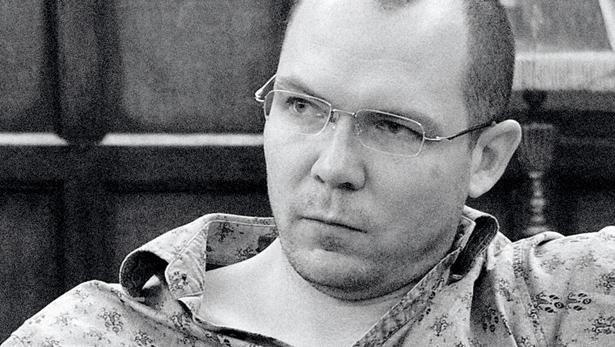I’ve read or part-read a number of books on game design including Raph Koster’s Theory of Fun, and The Art of Game Design by Jesse Schell (and a few more that I barely got a chapter into). I read Theory of Fun most the way through and re-read Art of Game Design a few times, especially when in the concept/ideas phase of a game, or when a prototype didn’t seem to be working out.
Lately though I’ve preferred watching videos, listening to podcasts and reading blog posts by a number of game designer’s whose games I enjoy, or in genres I’d like to get into. That genre I suppose I’d call narrative led/exploration/”not games”, but that doesn’t apply that well to all the designers and games below.
So anyways, here’s a list of people, companies, blogs and podcasts I like that you might find useful:
Jon Blow
A quick search on youtube will yield a deluge of talks from Jon, and he likes to get deep into game design in a creative, artistic and meaningful way. This isn’t the sort of designer who’s thinking up new combat mechanics or ways to virtually kill people with the most ‘fun’ combo. Developer of Braid and now The Witness, Jon Blow is like(!), my favorite person to listen to right now.
I’m not a particularly huge fan of Braid (I just don’t like platformers that much) and the preview of The Witness doesn’t excite me much either, but then I think that’s a game you have to play to ‘get it’. The main reason I like Jon is he likes to get into the meaty emotional parts of game design! Here’s his latest that I could find:
https://www.youtube.com/watch?v=Lo7cTlaVJdQ
I have trouble translating some of his advice into actionable steps, especially the above video where he talks about how you should be suuuper emotionally invested to the point of welling up over your game. I totally agree that being this invested in your game will help you through years of development, but… maybe I just don’t have an idea yet I love this much?
Thomas Grip
Designer at Frictional Games who are making SOMA and made Amnesia, Thomas has some great GDC talks, blog posts and tweets.
Why am I following Grip? I didn’t mind Amnesia, I played through maybe a quarter (though I don’t finish many games), but Amnesia tried new things, and that always gets my attention. I was intruiged by their concept of encouraging players to play along with the game, and the ‘faked’ parts of the game mechanics which made the game so scary. Find his stuff below:
https://twitter.com/ThomasGrip
http://www.gamasutra.com/blogs/ThomasGrip/762286/
Here’s his latest GDC talk: Evoking-Emotions-and-Achieving-Success
Jenova Chen
Designer on Journey, Flower and Flow, I was completely taken with Journey and have completed it 3-4 times on a friends PS3 (I’m not a console gamer). It’s rare to get such positive and uplifting feelings from a game these days, especially if your favorite game right now is Dota2, which I play on an almost daily basis. I also liked how minimalist it is, and despite the fact I play a lot of combat games, for the most part I am thinking a lot about non-combative game play designs. In his making-of Journey talks, Jenova references the Hero’s Journey story telling methods a lot, and so I feel the need to (re)read a book I have on that subject.
Jenova doesn’t have much in the way of a blog but he’s done a lot of talks at events like GDC.
https://twitter.com/JenovaChen
G4C14: Jenova Chen / Blank Canvas Designing A New Era of Emotional Storytelling Through Games
Jenova’s company, that game company, has just received $7m in funding for their next title – I can’t wait to see what they do next.
Daniel Pinchbeck
Designer of Dear Esther at The Chinese Room, a game I found almost infuriating to begin with. I had to really force myself through the start of the game without a run or jump button, but once I got to the caves that feeling disappeared and never returned. I think Dear Esther and Journey have somewhat of a cross over in terms of story telling, with Journey telling more with the cut scenes and “paintings”, and Dear Esther telling more via the voice overs. I like both for indie games as neither requires crazy expensive character animation and everything that goes with that.
Daniel’s next game, Everyone’s Gone to Rapture, has gone Playstation only (booo) but its obviously a great move by Sony as I’ll now buy their console just for this game.
https://www.youtube.com/watch?v=CKyoVQKnD4U
Steve Gaynor
Designer and writer on Gone Home, another non-shooter I quite liked. For what I cave-mannishly describe as a bit of a girly story line, I was pretty hooked on finding out what happens (I won’t spoiler it) and I ended up with a really clear picture of the main characters from just a couple photos and a bunch of voice overs and hand written notes. I did kinda speed play through this to just get the story, but as with many of the games above (apart from Journey), I wasn’t a wild fan – I’m more a fan of the designers creating non-traditional games.
Steve did a pretty cool podcast called Tone Control where he interviews other game designers/developers: https://itunes.apple.com/au/podcast/tone-control/id730148800?mt=2
His company, FullBright: http://fullbright.company/
Some great interviews with Steve on youtube: https://www.youtube.com/results?search_query=steve+gaynor (yep I’m this lazy!)
Anyone Else?
Just quickly, I also like to follow these developers, who have made some great games lately:
- Capy (Sword and Sworcery) ((Below is looking amazing))
- Klei (Don’t Starve)
- Bay 12 Games (Dwarf Fortress)
- Jason Roher (The Castle Doctrine)
- Probably missing another half dozen names here (to be continued)
If you’d like to be notified of future blog posts like this one you can sign up for my newsletter below:

